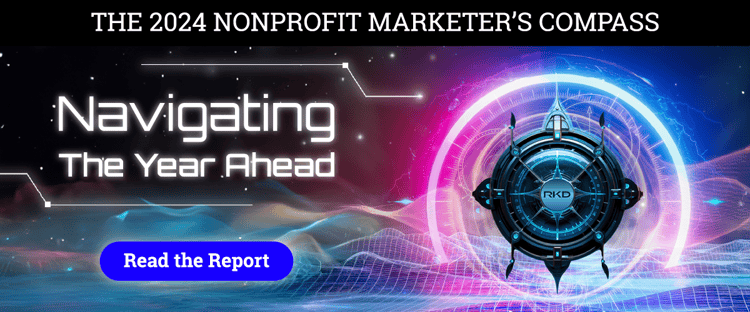In today's digital age, the dynamics of donor engagement have shifted dramatically.
We discussed this in great detail in “The 2024 Nonprofit Marketer's Compass.” One of the four beacons to consider this year is called "Think Dimensionally," and it emphasizes the critical need to understand donors beyond surface-level information.
This understanding is pivotal because donors no longer respond to "generic." One size has never fit all.
Donors are also consumers. So, it’s no surprise that they expect the same personalized interactions as those offered by leading commercial brands.
Nonprofits must mine their data to decode donors' behaviors, interests and motivations. It's more than just a smart move; it's essential. This approach is key to addressing some of the most pressing needs in the sector.
By tailoring outreach to each donor's behavior, nonprofits can deepen connections, enhancing both attraction and retention. This nuanced understanding is vital, serving as the foundation for lasting bonds and driving the mission forward.
Where to begin gathering data
Data is a dirty word—at least to some of us. We tend to think about data as vast, complex and overwhelming—especially in digital channels.
But you can start small and build from there.
Your biggest digital asset is your website! It's the main entry point for potential donors, providing a crucial first impression of your mission. Beyond its surface, your site is a treasure trove of first-party data, capturing visitor behaviors and preferences right from their initial interaction.
What you might not realize is that your website is a rich source of first-party data, allowing you to discern behaviors and preferences from the first visit—even for anonymous visitors.
Your website is not just a digital front door but a goldmine of first-party data, capturing nuances from every click and scroll. Understanding the traffic trends, visitor interactions and engagement hotspots reveals what truly engages your audience, be it specific content or compelling calls-to-action. Use this intelligence to create a resonant website experience that lays the groundwork for advanced data-driven strategies.
What this looks like in action
Consider Jesse, a first-time visitor to your website. Even with limited information, inferred data such as location or device type can tailor Jesse’s initial experience.
Most websites already use this kind of information to deliver mobile-optimized layouts when you’re on your phone vs. your laptop. You can go a step further with location-specific content for a new visitor.
Upon Jesse’s return, more personalized strategies come into play. Recognizing Jesse as a repeat visitor through her IP address allows for a more personalized experience.
For example, if Jesse previously browsed a specific program page but didn’t engage further, subsequent visits can highlight related content or events, nudging them toward deeper involvement.
If Jesse were to start filling out your donation form, you could tag that session as an abandoned donation. The next time Jesse returns to the site, she could be served a lightbox that encourages her to complete her donation.
The real power of this first-party data shines once Jesse converts into a donor. Post-donation, you now have access to transactional data like the date and donation amount.
When Jesse revisits your donation form, you can present her with an ask array based on her past giving, enhancing the likelihood of repeat donations and encouraging a larger gift. Likewise, you could present Jesse with a personalized message to suggest making a monthly gift.
Here's how Jesse's experience unfolds:
- When Jesse first visits the website, it rolls out a welcome mat just for her, displaying content she likes and making navigation effortless.
- HOW: Inferred data such as location or device type
- On subsequent visits, the website recalls Jesse's previous interests, acting like a friend who knows her preferences and shows her more of what she might like.
- HOW: Engagement and behavioral data
- If Jesse begins to donate but doesn't finish, the website takes note and subtly prompts her to complete the donation during her next visit.
- HOW: Abandoned cart lightbox
- Once Jesse donates, the website becomes even smarter, recommending an ideal donation amount for her next time, simplifying her decision to contribute again.
- HOW: Dynamic and real-time gift arrays
Conclusion
Let's face it: in the whirlwind of the digital age, data is your secret weapon. It’s what turns casual website visits into lifelong missions. By diving deep into the digital data deluge, you're not just crunching numbers; you're crafting connections.
This isn’t just about donations; it’s about revolutionizing the donor experience. Make your website more than a portal. Make it a partner in your mission.
Additional Resources
- Rethinking nonprofit tech: Why empathy must lead the way
- Bridging the nonprofit tech gap: 5 key areas of need revealed
- The bedrock of nonprofit fundraising: Accurate and accessible data
- Beyond dashboards: Tailoring measurement to nonprofits' unique needs






Leave a comment: